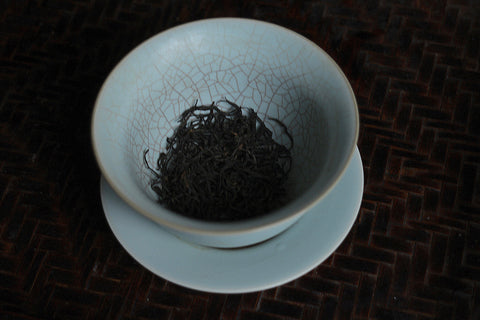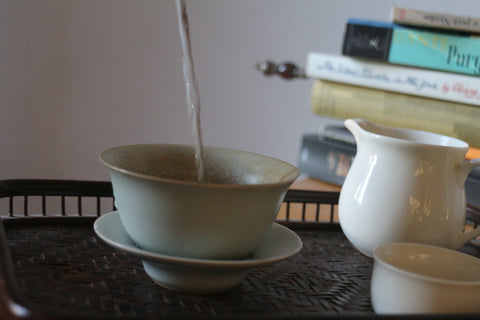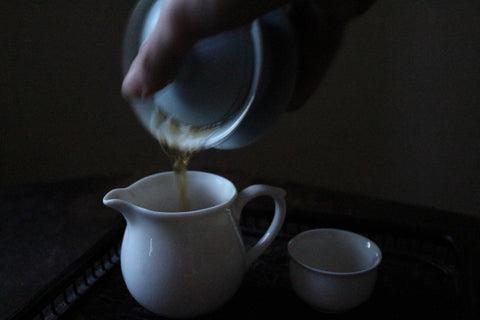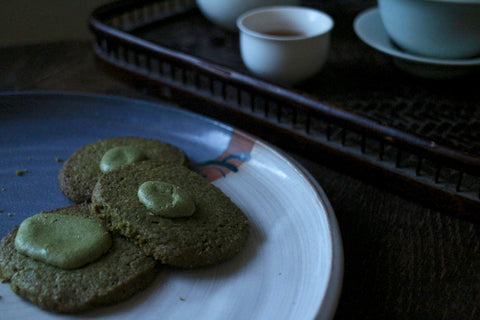Smoke & Flowers
The sun's warmth is shaded today by a haze, turning the sky into a watercolour of rose-yellow and diluted blue. I have been craving rich black tea all winter—malty, pungent, and earthy—but now seems the perfect time to sample two black teas, Fengqing Dian Hong & Qimen Maofeng. Visitors to our former teahouse may well recognise the first, as it is hard to forget once having encountered it in-person, but this Qimen is a brand-new offering, and neither have been previously available online. (To read about the process of sourcing one of our previous Qimens, take a look at this blog post)
While somewhat well-known in the west as Keemun, the lower-grade basis for many 'English breakfast' blends, these fine, wiry leaves with the propensity to entangle and clump are something else: many quality Qimen Hong Cha these days are baked in the oven for a clean, floral flavour, but these have been dried over charcoal according to the traditional method, lending them a rich, full aroma which is immediately apparent. As the leaves swell with hot water, they can release a quite delicate brew, toasty with notes of cacao or peanut and slightly floral, but can equally be steeped longer or more concentrated for a full and malty flavour, in which its absorbed smokiness comes to bear, with undertones of red fruit like raspberry.


Qimen all a-tangle in a gaiwan which rather reflects the bluer patches of sky. Though the leaves seem no wider than a needle, they plump up and reveal their fleshiness upon reconstitution.
The Fengqing Dian Hong is something of a different, but similarly rich, story: those familiar with Dian Hong and other black teas from Yunnan may be surprised, upon opening its jar or packet, to be assaulted not by a profusion of golden hairs, as is a common feature in this category, but by a heady bouquet rare in black tea: roses and red fruit. The large, wavy leaves are the colour of charcoal and appear interchangeable with much other black or dark oolong tea; just their light purple shades are unique as is their unmistakable scent. Make no mistake, though, these leaves have not been scented, but are the result of the combination of a particular cultivar—different to those classically used for Dian Hong—and processing technique. Infusing them results in a liquor that tastes much as it smells, heady and extremely floral, with the perfect touch of tannins.


Pouring out the last infusion as twilight rolls in; though unconventional in several senses, I rather enjoy these matcha sablés, or shortbreads.
I had just baked some green-tea-flavoured shortbreads to use up some matcha past its prime, and I couldn't resist immediately pouring myself a round of Fengqing to accompany them; the subtle pungency and sublime florality perfectly complemented the verdant earthiness and butter of the cookies. As an incurable Naschkatze (German for having a sweet tooth, literally ‘nibble cat’), I cannot resist making a delightful teatime out of such combinations.
And after all, the rose-yellow sky with a gauzy haze like smoke simply demanded a corresponding cuppa'.
Written by Dimitri





